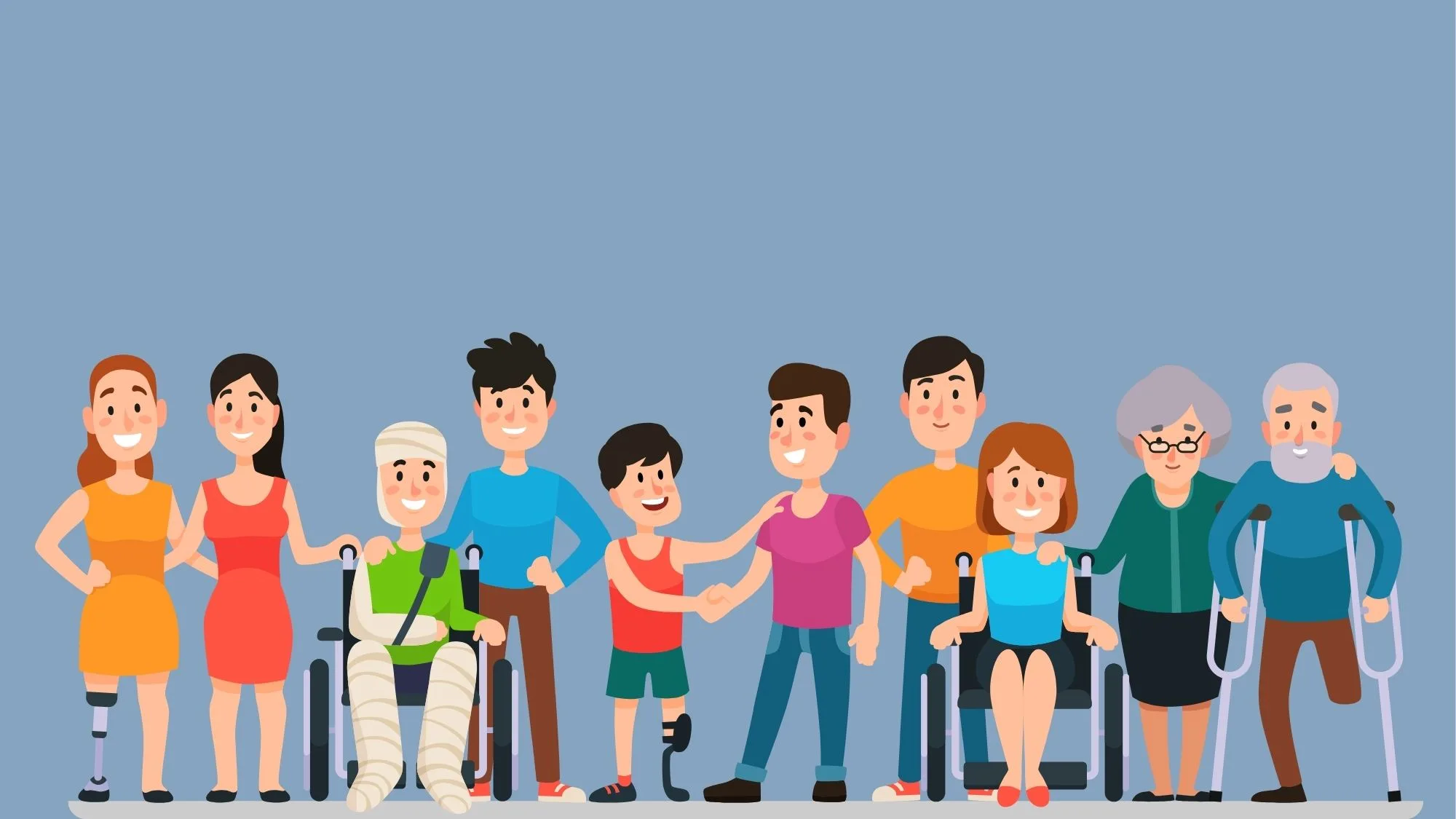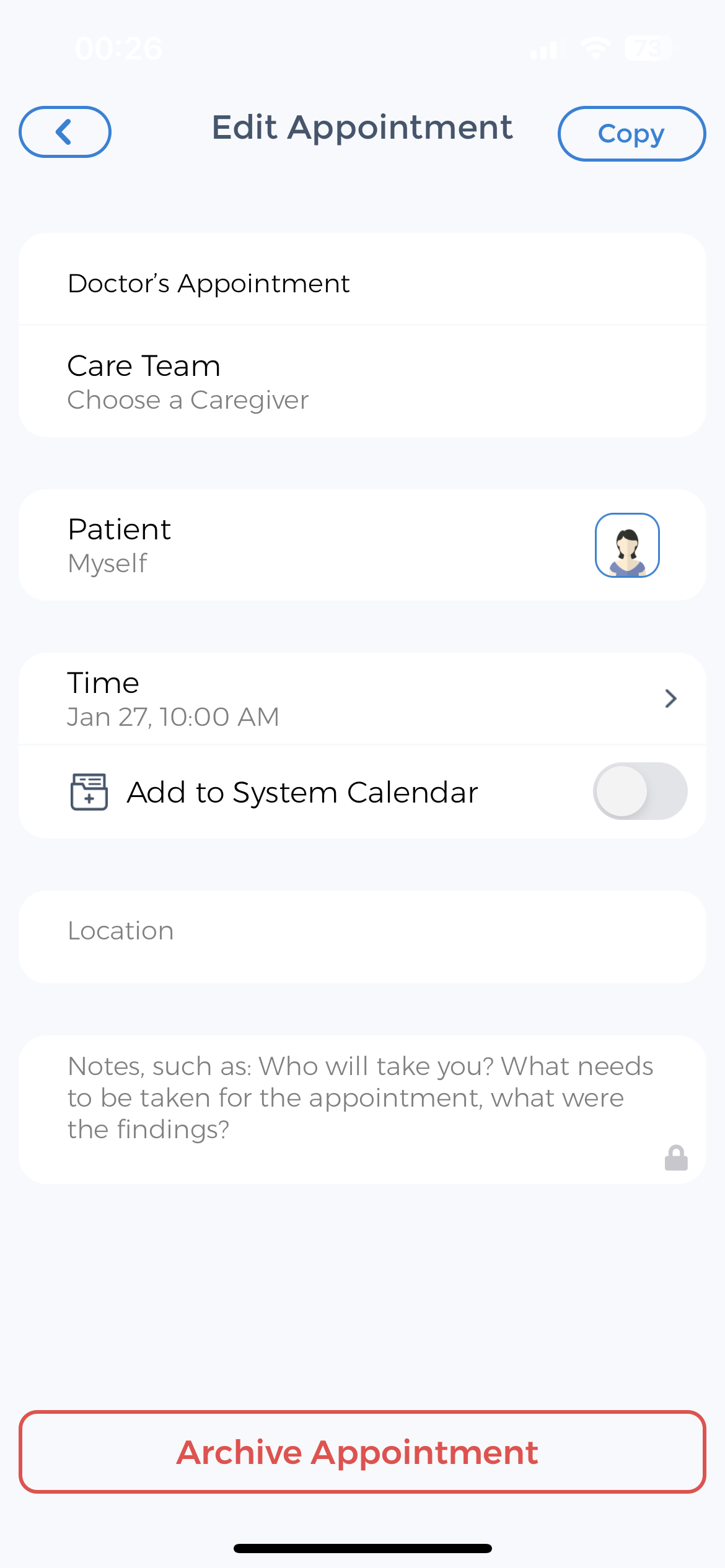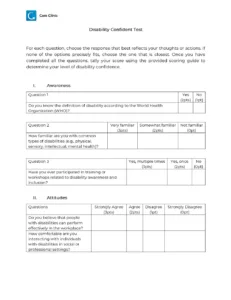
Living with a disability can present unique challenges, both for the individuals themselves and the organisation that serve them. In order to ensure equal opportunities and foster inclusivity, it is crucial for businesses to become disability confident. A Disability Confident Test is a valuable tool that enables organisation to assess and enhance their level of disability confidence.
In this article, we will explore the concept of disability confidence, discuss the importance of the test, delve into its key principles, and examine the benefits of implementing disability confidence in the workplace.
Understanding the Concept of Disability Confidence
Disability confidence refers to the ability of individuals and organisation to understand, respect, and accommodate the needs of people with disabilities. It is a mindset that goes beyond mere compliance with legal requirements and strives for true inclusivity. By taking the Disability Confident Test, organizations can evaluate their understanding of disability issues and identify areas for improvement become a disability confident.
The Importance of Disability Confidence
Being disability confident is not just a moral obligation, but it also makes good business sense. By fostering inclusivity, organisation and employers can tap into a diverse pool of talent and benefit from the unique perspectives and skills that people with disabilities bring to the table. Additionally, an inclusive workplace promotes employee well-being and engagement, which ultimately translates into higher productivity and better overall organizational performance.
Key Principles of Disability Confidence
The Disability Confident Test assesses organizations based on a set of key principles. These principles include:
- Accessible Communication: Ensuring that information, communications, and services are accessible to people with disabilities.
- Inclusive Recruitment: Implementing inclusive recruitment practices that attract and retain individuals with disabilities.
- Skills Development: Offering opportunities for skills development and career progression for employees with disabilities.
- Reasonable Accommodation: Making reasonable adjustments to enable individuals with disabilities to fully participate in the workplace.
Accessible Communication is a crucial aspect of disability confidence. It involves providing information in formats that are accessible to people with various disabilities, such as visual impairments or hearing impairments. This can include providing documents in alternative formats, such as braille or large print, and utilizing captioning or sign language interpretation for videos or presentations. By ensuring that communication is accessible, organizations can ensure that individuals with disabilities have equal access to information and can fully participate in discussions and decision-making processes.
Inclusive Recruitment is another key principle of disability confidence. It involves implementing practices that attract and retain individuals with disabilities, ensuring that the recruitment process is accessible and inclusive. This can include advertising job vacancies in disability-specific networks and organizations, providing reasonable accommodations during interviews and assessments, and offering support and mentoring programs for existing employees with disabilities. By actively seeking out and welcoming talents disabled people, organizations and disability confident employer level can create a diverse and inclusive workforce that reflects the wider community.
The Structure of the Disability Confident Test
The Disability Confident Test consists of two main components: understanding the key principles and applying them in practical scenarios. Let’s explore each component in detail.
Components of the Test
The first component of the test assesses the organization’s understanding of the key principles of disability confidence. This may involve multiple-choice questions, case studies, or scenario-based assessments. It is designed to gauge the depth of knowledge and awareness that the organization has regarding disability inclusion.
For instance, participants may be presented with hypothetical scenarios where they have to make decisions regarding workplace accommodations for employees with disabilities. They will need to demonstrate their understanding of reasonable adjustments, accessibility requirements, and the importance of fostering an inclusive culture.
The second component of the disability confident certificate focuses on applying these principles in practical situations. Participants may be asked to analyze case studies, identify potential barriers, and propose appropriate solutions. This component aims to assess the organization’s ability to translate theoretical knowledge into real-world actions.
For example, participants might be given a case study about an employee with a mobility impairment who faces challenges in accessing certain areas of the workplace. They will need to identify the barriers that exist and suggest practical solutions to remove those barriers, such as installing ramps or providing assistive technology.
Scoring and Interpretation
After completing the Disability Confident Test, organizations receive a comprehensive report that outlines their strengths and areas for improvement. This feedback is invaluable in guiding organizations towards enhancing their disability confidence and creating a more inclusive environment for disabled people and all.
The report not only provides a score but also offers detailed insights into the organization’s performance in each component of the test. It highlights the organization’s strengths, acknowledging areas where they have excelled in disability confidence. Additionally, it identifies areas for improvement, suggesting specific actions that can be taken to enhance disability inclusion within the organization.
This feedback serves as a roadmap for organizations, helping them prioritize their efforts and allocate resources effectively. It empowers them to take targeted actions that will have a meaningful impact on their disability inclusion initiatives, fostering a workplace environment where everyone can thrive.
Printable Disability Confident Scheme
⬇️ Disability Confident Scheme Test PDF Printable
Benefits of Implementing Disability Confidence
The benefits of implementing disability confidence in the workplace are wide-ranging and impactful. Let’s explore some of the key advantages of disability confident employers.
Enhancing Workplace Inclusivity
By becoming disability confident, organizations send a clear message that they value diversity and are committed to creating an inclusive workplace. This commitment fosters a sense of belonging among employees and helps build a culture of respect and understanding.
Imagine a workplace or disability confident employer where individuals with disabilities feel empowered to bring their whole selves to work, knowing that their unique perspectives and talents are valued. Disability confidence goes beyond mere compliance with legal requirements; it creates an environment where everyone can thrive. When employees feel included and appreciated, they are more likely to collaborate, share ideas, and contribute to the overall success of the organization.
Boosting Employee Morale and Productivity
When disabled employees feel valued and included, their morale and motivation increase. They are more likely to be engaged, committed, and productive. Disability confidence not only benefits individuals with disabilities but also creates a positive work environment for everyone.
Imagine a workplace where employee morale and commitment are encouraged to bring their authentic selves to work, regardless of their abilities. This level of acceptance and support fosters a sense of loyalty and dedication among employees. When individuals with disabilities are given the opportunity to fully participate and contribute, they can unleash their potential and make significant contributions to the organization’s success. This, in turn, boosts overall productivity and drives innovation.
Moreover, disability confident leader level can lead to a more positive and inclusive company culture. When employees witness their colleagues being treated with respect and dignity, it sets a powerful example and encourages other employees develop a spirit of empathy and understanding. This ripple effect can create a harmonious work environment where everyone feels valued and motivated to give their best.
Overcoming Challenges in Disability Confidence Testing
While the Disability Confident Test is a valuable tool, it is important to address some of the challenges that may arise during the testing process.
Addressing Bias and Misconceptions
One common challenge is overcoming biases and misconceptions surrounding disabilities. Organizations must ensure that their high quality staff members understand the true meaning of disability confidence and are equipped with accurate information to make informed decisions.
It is crucial to educate individuals about the diverse range of disabilities and their impact on people’s lives. By providing comprehensive training programs, organizations and mental health and can help dispel myths and stereotypes associated with disabilities aand long term health conditions. This will enable staff members to approach disability confidence testing with an open mind and without preconceived notions.
Ensuring Test Accessibility and Fairness
Another challenge is ensuring that the Disability Confident Test is accessible to all individuals, regardless of their abilities. Organizations should provide appropriate accommodations and alternative formats to ensure equal access to the online self assessment for everyone.
One way to address this challenge attitudes are by offering multiple testing options and self assessment validated that cater to different needs and to give fair chance for DWP employees. For individuals with visual impairments, organizations can provide the test in braille or offer audio versions. Additionally, organizations can make the test available in different languages to accommodate individuals whose first language may not be English.
Furthermore, organizations should consider the physical accessibility of the testing venues. Ensuring that testing centers are wheelchair accessible and have appropriate facilities for individuals with mobility impairments is essential. This will create an inclusive testing environment that promotes employees fairly and equality act for all.
Future Perspectives on Disability Confidence Testing
As technology continues to advance and society evolves, disability confidence testing is expected to adapt and grow. Let’s explore some future perspectives and potential developments for disability confident commitments.
Technological Advancements and Their Impact
 New technologies, such as artificial intelligence and virtual reality, have the potential to revolutionize disability confidence testing. These tools can simulate real-world scenarios and provide more accurate assessments, enabling organizations to further enhance their disability confidence.
New technologies, such as artificial intelligence and virtual reality, have the potential to revolutionize disability confidence testing. These tools can simulate real-world scenarios and provide more accurate assessments, enabling organizations to further enhance their disability confidence.
Imagine a future where disability confidence testing incorporates virtual reality simulations that allow individuals to experience different disabilities firsthand. Through this immersive experience, organizations can gain a deeper understanding of the challenges faced by individuals with disabilities and develop more inclusive practices. Artificial intelligence algorithms can analyze the data gathered from these simulations, providing valuable insights and recommendations for improvement.
Furthermore, advancements in wearable technology can also play a significant role in disability confidence testing. Wearable devices equipped with sensors can collect real-time data on physical abilities and limitations, providing objective measurements for assessment. This data-driven approach to disability confident journey can help organizations tailor their accommodations and support to the specific needs of individuals with disabilities, fostering a more inclusive environment.
Policy Changes and Their Implications
Changes in legislation and policies surrounding disability rights and inclusion are likely to shape the future of disability confidence testing. Organizations must stay informed about these changes and adapt their practices accordingly to remain at the forefront of disability inclusion.
One potential future development is the integration of disability confidence testing into legal frameworks. Governments may require organizations to undergo regular disability confidence assessments as part of their compliance with disability rights legislation. This would not only ensure that organizations are actively working towards inclusivity but also provide a standardized benchmark for measuring progress.
Moreover, as societal attitudes towards disability continue to evolve, there may be a shift towards a more holistic approach to disability confidence testing. This could involve assessing not only an organization’s physical accessibility but also its cultural and attitudinal inclusivity. By evaluating the overall disability confidence of an organization, policymakers can encourage a comprehensive approach to disability inclusion.
While the current Disability Confidence Test is a powerful tool that helps organizations assess and enhance their disability confidence, the future holds even greater potential. Technological advancements, such as virtual reality simulations and wearable devices, can provide more accurate assessments and personalized support. Additionally, policy changes and changing attitudes that prioritize disability rights and inclusion can further drive the evolution of disability confidence testing. Embracing these future perspectives is crucial in creating a more inclusive and equitable society for all.
Take A Neurodivergent Test
Discover more assessment tests focusing on neurodivergent conditions. Access them by clicking here to view the complete set of tests.



